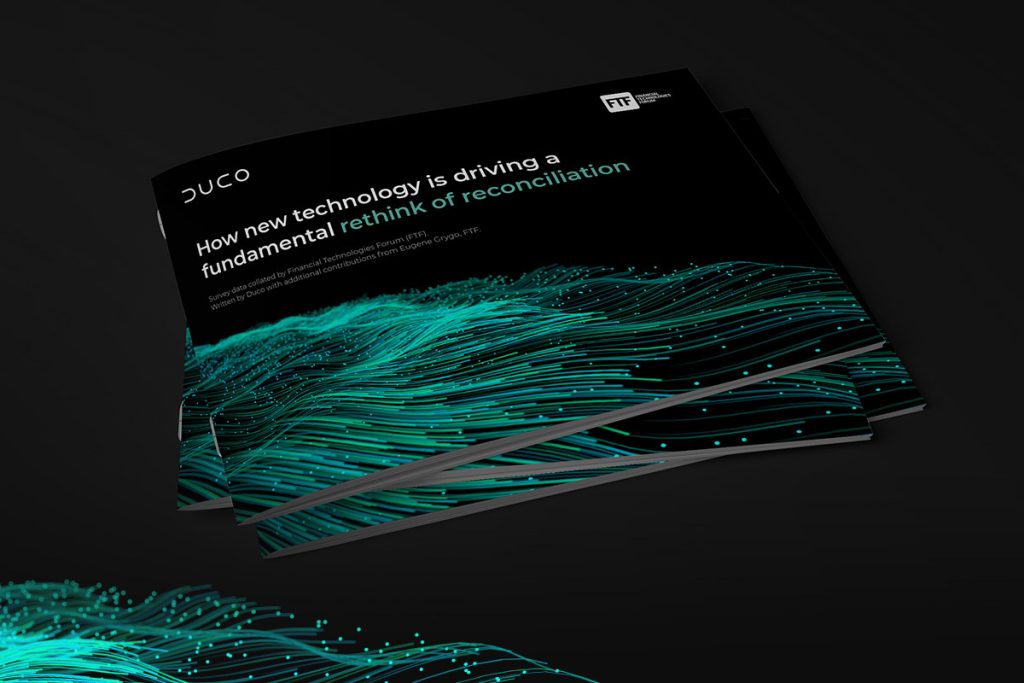Firms expect to fully automate reconciliation within five years – here’s how
 Reconciliation is at an inflection point. Firms are ready to seize the opportunities afforded by new technology to overcome their data challenges.
Reconciliation is at an inflection point. Firms are ready to seize the opportunities afforded by new technology to overcome their data challenges.
Automation is a top priority. It’s the key to dealing with the scale and complexity of today’s financial data. It will give your firm the agility needed to thrive, even in extraordinary circumstances like those seen over the past year.
While only 22% of firms can currently boast strong levels of reconciliation automation, appetite for change is high. Our new survey with FTF found that nearly 70% of firms expect to achieve full automation within the next five years.
Why now?
Data volumes are growing exponentially. Last year, market research and intelligence firm IDC predicted that the world will create as much data in the next three years as it did in the previous 30. Managing all this data is proving increasingly difficult. MIT Sloan predicts that firms globally may be losing up to 25% of revenue due to poor quality data.
On top of this, the COVID-19 pandemic has highlighted the importance of operational agility. The shift to homeworking has had a big impact on the way teams access tools to manage data.
Automation levels are low, but improving
Tools that were once designed to help financial institutions with their data have now become blockers to progress. Legacy technology built for a single purpose or type of data can’t handle the scope and complexity of today’s formats. Long development cycles and high onboarding costs mean firms are often forced to create manual controls to plug the gaps.
These are quick to implement and often grow into mission-critical functions. But manual processes introduce the risk of human error. In fact, 28% of firms say that mistakes from manual systems are their biggest reconciliation problem.
Why have firms persevered with this approach? In part because it is easy. Also, change has been too expensive. Over 64% of firms we surveyed said the cost of moving manual reconciliations onto new or existing systems was prohibitive.
But there is hope. 66% of firms rated solutions to automate outdated manual processes as a top area of investment in the coming years.
New technology empowers firms to unlock their data potential
So what has changed? The answer is that technology has evolved.
For starters, your reconciliation solution no longer needs to involve costly hardware in your offices or data centres. Software-as-a-Service (SaaS) platforms like Duco have made it possible to harness the computational power and accessibility of the cloud.
SaaS provides unrivalled scalability, while removing the need for expensive hardware upgrades and maintenance. This will be welcome news for the 81% of firms who currently expect their reconciliation costs to stagnate or rise.
Machine learning and no-code functionality frees teams from complex and repetitive tasks
Machine learning (ML) plays a key role in data integrity. Because new reconciliation tools are built in the cloud their machine learning engines are able to train on huge datasets. They learn from data and previous actions to predict and automate how to manage new data and exceptions.
For example, in the past 12 months, our ML engine Duco Alpha processed 58 billion lines of data. This saved customers nearly 2,700 people hours by automating repetitive tasks.
Additionally, the no-code revolution is a complete game changer. It empowers end users to take control of their solutions and shape them to their needs. For example, Duco’s proprietary Natural Rule Language allows data experts to build controls themselves in plain English.
This can dramatically cut set-up times from weeks and months to just hours. Compare this to legacy technology, where new reconciliations needed a business requirement document, a development phase and a testing phase. Our survey found that only around half of firms are able to onboard a new reconciliation in under 30 days. Well over a fifth stated that it took between three and six months.
Harnessing new tech to achieve business goals
It’s not surprising that firms are looking to new technology to overcome the traditional pain points associated with reconciliation.
Flexible data integrity tools can help them not only solve old problems, but achieve their strategic goals. According to our survey, the top focus for 30% of firms is improving operational data quality. Improving operational efficiency is also high on the list, with 29% of firms rating this their top goal.
Embrace the future of reconciliation
Reconciliation is changing. Firms now know that there is a better way to manage their data. They no longer have to struggle with the pain points brought about by manual processes or legacy technology. They are able to look beyond solving problems and instead think about unlocking greater operational efficiency and agility.
To find out more, download our full report: How new technology is driving a fundamental rethink of reconciliation











































